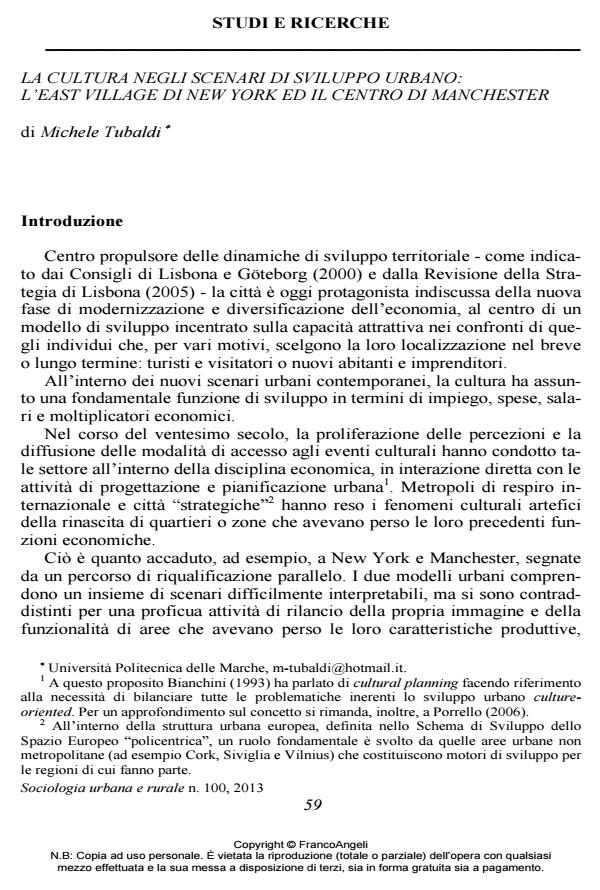Culture in Urban Development Scenarios: the East Village in New York and the Manchester City Centre
Journal title SOCIOLOGIA URBANA E RURALE
Author/s Michele Tubaldi
Publishing Year 2013 Issue 2013/100
Language Italian Pages 15 P. 59-73 File size 224 KB
DOI 10.3280/SUR2013-100005
DOI is like a bar code for intellectual property: to have more infomation
click here
Below, you can see the article first page
If you want to buy this article in PDF format, you can do it, following the instructions to buy download credits

FrancoAngeli is member of Publishers International Linking Association, Inc (PILA), a not-for-profit association which run the CrossRef service enabling links to and from online scholarly content.
The essay investigates the influence of culture on urban land, assessing the socioeconomic impact on cities or quarters involved in local regeneration processes. Two case studies are examined, the East Village neighbourhood of New York City and the city centre of Manchester, considering the data which reveal the socio-economic transformation through the urban benchmarking analysis.
Keywords: Culture, City, Territorial Development, Urban Requalification, Gentrification, Urban Benchmark.
Michele Tubaldi, La cultura negli scenari di sviluppo urbano: l’East Village di New York ed il centro di Manchester in "SOCIOLOGIA URBANA E RURALE" 100/2013, pp 59-73, DOI: 10.3280/SUR2013-100005